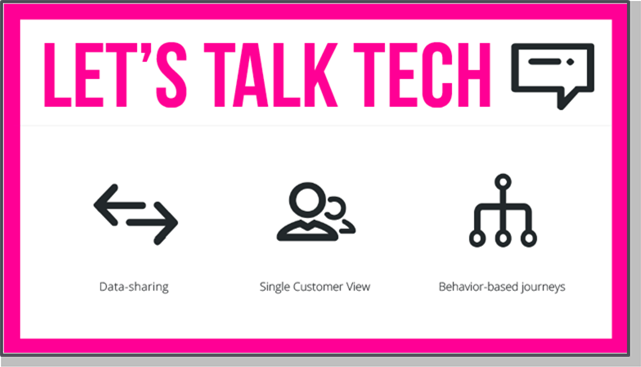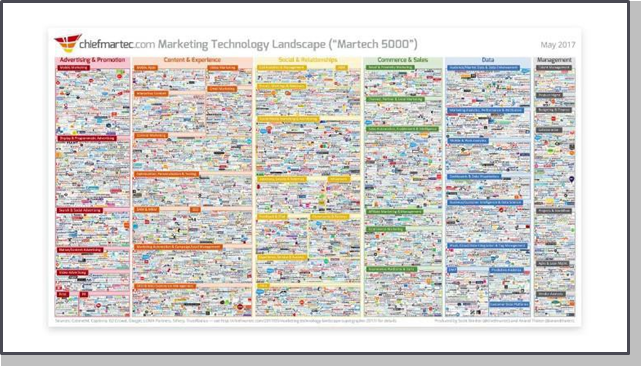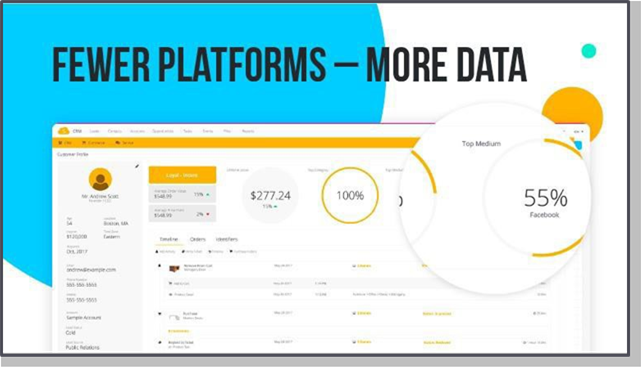Ross Andrew Paquette
Ross Andrew Paquette is the founder and CEO of Maropost. After starting the business in his apartment in 2011, Ross has gone on to consistently double the company’s annual growth, making Maropost one of North America’s fastest growing tech companies.
To survive and succeed in today’s consumer market, every business needs to enlist the help of revenue management tools. Whether you’re starting a business, in a full-fledged growing market, or just running a stable business, learning how to use revenue optimization and tools effectively can help your business succeed while saving you time and money.
The majority of business owners will always run into the same problem—they try to grow their business as much as they can on one product only. Because of this, their business doesn’t move quickly enough when they start to grow and they can even end up losing money over this vital mistake.
The 3 Keys to Revenue Optimization
The 3 most important things to consider when we’re talking about revenue management and optimization are how you leverage data sharing, a single customer view, and behavioral based journey. These 3 areas are core to what any successful E-commerce company, digital marketing company, or publishing company should be focusing on.
Data Sharing
More often than not, businesses are running into one of the biggest issues of revenue optimization which is spending too much time on integrations on the technical components of running their business versus the actual strategy.
What companies often forget is that their goal is to generate revenue,
and not to manage a development team or figure out how they can piece together 10 or 20 different products in order to run their business. By thinking about how you are sharing data as a company, you can minimize the efforts and maximize the results.
Single Customer View
Focusing on single customer view can help you better analyze your customer. By analyzing your customer you can begin to understand them and find ways to make your business more efficient, therefore increasing your revenue. A big part of analyzing all of this data is looking at your day-to-day strain.
If you’re constantly stressed out as a company about whether your platform is going to fail during launch, whether your payments are going through, or whether your revenue is coming in, you’re wasting a lot of mental energy on stressing and worrying. When you start to think about integrating all of these analytics into one single platform, you can begin to reduce that stress and free up your mental energy for growing your business.
Behavior-Based Journeys
Behavior-based journeys are a key piece to how you are able to analyze the data that you bring in. In general, behavior-based journeys relate more to marketing automation, sales automation, and any path that you’re looking for your customers to come down.
The majority of a company’s revenue driving efforts are related to traffic and the conversion side of things. When you’re thinking about behavior-based journeys, you want to focus on finding platforms and utilizing platforms
that can manage you making a revenue of $0 to $30 million. These kinds of platforms are going to allow you to grow and are critical for your behavior based journeys for 2 reasons:
Reason 1: Flexibility
With these kinds of platforms, you will have the flexibility to push your customers down the path that’s the most appropriate for them, creating the experience that’s also most appropriate for them.
Reason 2: Reporting
The second reason involves the reporting side of things. By utilizing the same platform throughout the growth of your business, your data will be in the same place the entire time (instead of losing crucial analytics by jumping from platform to platform). Because of this, you will be able to look at that data based on what’s working, what isn’t, and optimize based on what’s critical from there.
Tech Stack
Every company, whether they know it or not, has a tech stack. It doesn’t matter if you’re starting a business and you’re day one, you’re starting with some type of solution. Below is a list of thousands and thousands of different platforms that provide a variety of solutions for businesses in different stages of their growth and make up a company’s tech stack.
The problem with this chart is that most businesses aren’t only using one platform or one tool to provide them solutions. That’s because these platforms aren’t equipped to handle a variety of solutions. So as companies grow and find the need for more solutions, whether that’s ecommerce, email, marketing, or even support help, they are having to change platforms, lose old ones and gain new ones.
When you’re on the hunt for the right platform for your business, it’s important to ask yourself where you are in your business and what you’re looking for in a platform. The few solutions you have, the less stressed and more effect you’re going to be.
Scaling Up
If you think of nothing else when considering tools for revenue optimization, think of scaling up. The goal of nearly every company in the world is to grow. There are so many businesses out there who are using the same platform they purchased on day one of their business as they are five years later.
The truth is that you have to consider how your company is going to scale up when choosing a platform. Some companies have the need to scale up every few years, every year, or even every month depending on the type of business and rate of growth their experiencing. Choosing a platform that can grow with you is essential for making your life easier in the coming months and years, and saving you time and money.
Key component—is this product for me?
It’s important to consider whether or not a certain product or platform is for you before you sign up for an account and transfer all of your data over. Because once you start to migrate your data over, once you start to set up order forms, or lead funnels, or click flows, or automation journeys, you’re now investing in that product. What you need to make sure of is that while you’re investing in this product, are they investing back in you?
A product can invest back in you in multiple ways, including in the form of a scalable growth based platform that is not going to crash. The investment can also come in the form of support. Is there going to be someone available and willing to talk to you when you have an actual issue or if you’re looking to understand the product better? Building strong relationships with platforms is one of the best ways you can ensure that they are willing to invest back in you and your business.
Fewer Platforms, More Data
A trend among businesses in today’s consumer market is having too many platforms. This can be tempting and easy to do because each platform promises something different and a different area of expertise. So you may think that the best and most effective way to handle marketing and revenue optimization is by having as many platforms as possible.
The truth is that it’s really impossible to run a business when your data and solutions are spread across dozens of places. When you have customer data in all these different places, the numbers aren’t speaking to each other and it can be difficult to get a true understanding of your customers.
How can you truly understand who your customer if you have that many solutions?
Cutting down on the number of platforms you have and make those decisions in the best format upfront is one of the best decisions you can make for your business. When you spread yourself thin across all of these different platforms, you’re taking up a lot of emotional energy and energy in general on just managing that process.
Staying on any single platform too long is going to hurt your business when it comes time to grow or find new solutions. Migrating off of your platforms and onto one that provides all the support and solutions you need before your business is at that critical point.
Investing today to grow tomorrow
Companies, especially at the beginning stages of their business, are looking for the cheapest solution to save money. And while this may make sense and work for them at the beginning, they’re going to see struggle and potentially lose money as their business grows and their demand for solutions and support exceeds their platform.
Investing in a higher quality platform today, even if you’re just at the beginning of growing your business, will allow you to grow more quickly and more easily in the future.
List of products
There’s a variety of platforms out there that have the capability to give you a variety of solutions while allowing your business to grow. From Fresh Desk to Zen Desk, Shopify, InfusionSoft, Limelights, HelpSpots, AWebers, Get Response, Maropost, and even Hubspot are all great option that offer various solutions depending on the needs of your business.
Another important thing to keep in mind when deciding between platforms is that a lot of these platforms are businesses themselves and are going to try to upsell you. It’s important to know exactly what kinds of solutions you need for your specific business model and not get sucked into buying extra tools that you will have no use for down the road. Be sure to think ahead and consider the growth of your business, while also making sure a product is really for you before committing.
Wrapping it Up
Finding the right tools to help your business grow is vital for surviving in today’s consumer market. Considering things like behavior-based journeys, scaling up, and investing in your future is going to help lead you in the direction of the perfect tool for your business.
Ask yourself, “What’s the end result? Where are we going?”
Being able to explain to a company that understands technology where your business is going is incredibly powerful. By doing this, you can give platforms an opportunity to tell you the things that you’ll need to watch out for and overcome from a technology standpoint.



